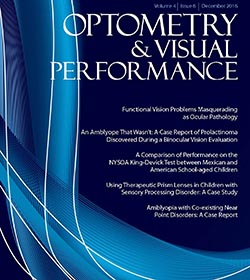Background:
The King-Devick Test has long been used to screen reading eye movements in school-aged children. A normative database has been developed for use in the United States (U.S.), but there is limited information on its application internationally. The purpose of the current study is to compare the performance on the King-Devick Test of Mexican school-aged children to the established norms of U.S. children.
Methods:
Six- (n=33), nine- (n=28), twelve- (n=33), and fourteen-year-old (n=26) children from six geographically-separate Mexican states were enrolled. Subjects completed subtests I-III of the King-Devick Test in a seated position under normal room illumination. Each subtest was timed and behavioral characteristics were assessed. Performance of each age group was compared to the U.S. database using simple, paired t-tests with a probability factor of 0.05.
Results:
There was a statistically significant difference in performance between 14-year-old children in the Mexican and U.S. group (p=0.003). No significant difference was found in the respective comparisons between six-, nine-, and twelve-year-old Mexican and U.S. children (p>0.05).
Conclusion:
Performance on the King-Devick Test is similar between Mexican and U.S. children. It would be appropriate to use this test in a similar manner for evaluating reading eye movements in Mexican, school-aged children.

